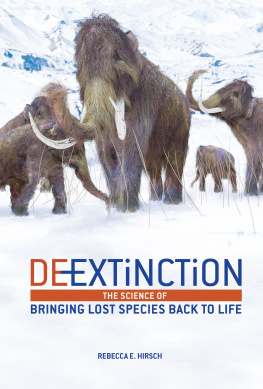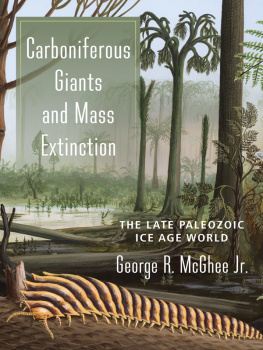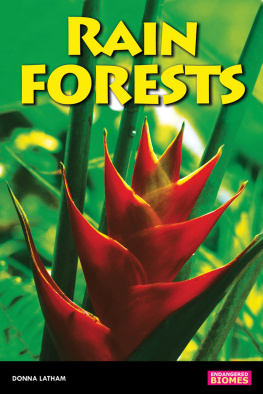
Simon & Schuster
1230 Avenue of the Americas
New York, NY 10020
www.SimonandSchuster.com
Copyright 2015 by Michael Tennesen
All rights reserved, including the right to reproduce this book or portions thereof in any form whatsoever. For information, address Simon & Schuster Subsidiary Rights Department, 1230 Avenue of the Americas, New York, NY 10020.
First Simon & Schuster hardcover edition March 2015
SIMON & SCHUSTER and colophon are registered trademarks of Simon & Schuster, Inc.
For information about special discounts for bulk purchases, please contact Simon & Schuster Special Sales at 1-866-506-1949 or .
The Simon & Schuster Speakers Bureau can bring authors to your live event. For more information or to book an event, contact the Simon & Schuster Speakers Bureau at 1-866-248-3049 or visit our website at www.simonspeakers.com.
Book design by Ellen R. Sasahara
Jacket design by Christopher Lin
Library of Congress Cataloging-in-Publication Data
Tennesen, Michael.
The next species: the future of evolution in the aftermath of man / Michael Tennesen. First Simon & Schuster hardcover edition.
pages cm
Includes bibliographical references and index.
1. Evolution (Biology) 2. Mass extinctions. 3. NatureEffect of human beings on. I. Title.
QH366.2.T465 2015
576.8dc23
2014037267
ISBN 978-1-4516-7751-5
ISBN 978-1-4516-7753-9 (ebook)
To Annabelle, my mother, who loved the oceans, the mountains, the deserts, the birds, the animals , and the people.
Every part of this soil is sacred in the estimation of my people. Every hillside, every valley, every plain and grove, has been hallowed by some sad or happy event in days long vanished.
Chief Seattle, 1854
We live in a zoologically impoverished world, from which all the hugest and fiercest and strangest forms have recently disappeared.
Alfred Russel Wallace, 1876
Contents
Prologue
WE HAVE NO IDEA WHAT WERE IN FOR
I T WAS MID-MORNING , June, during the tropical dry season, as the Peruvian army Mi-17 helicopter lifted us off from a military base near the town of Ayacucho, Peru, on the western side of the Andes Mountains and slowly ascended toward the crest of the magnificent range. The expansive dry terrain below was spotted with cactus, shrubs, and wide stretches of open space, interrupted only by small villages covered in a fine layer of the local dust.
These slopes constitute the eastern boundary of the Atacama Desert, one of the driest spots on earth. It gave no hint of the verdant rain forest that awaited us just beyond the summit of the Andes. But as the helicopter crested the mountains, the eyes of the passengersa military crew and an international team of scientistsopened wide at the sudden appearance of the headwaters of the Amazon River and the thick blanket of deep green vegetation that cloaked the mountains on this much wetter terrain.
Inside the helicopter, the group of celebrated biologists, part of the Rapid Assessment Program, had been sent here by the Washington, DCbased environmental group Conservation International to do a quick and dirty survey of the wildlife in the tropical forest region of the Vilcabamba, one of several mountain ranges within the eastern Andes under threat by oil and mining interests. Conservation International wanted to know if the area was rich enough in the number of plant and animal species to warrant the use of the groups limited funds to save it. The more species there were, the more likely that some would survive the current environmental crisis.
I sat with the scientists on uncomfortable metal benches bolted to the wall, gear piled high around us. Most were dressed in khakis with an assortment of high-top boots, a few beards, and several parkas. They all tried to peer out the cloudy glass portals and the open door of the cabin, excited by their first look at the tropical forest theyd come to study. A Peruvian soldier, wearing no seat belt, one arm hooked through a wall handle adjacent to the open door, was perched dangerously with his legs and gun dangling out the helicopter. Insurgents had wounded one of his comrades the day before, and he scanned the forest below, looking for trouble.
Our view stretched eastward over the Amazon Basin where the sun had already begun to heat the tropical forest, turning its moisture into towering thunderheads, which by noon would begin to assault the eastern face of the Andes with wave upon wave of mist and rain. The result of all this water was a lush tropical menagerie, an area scientists consider to be the most biologically diverse of all the remaining forests on earth. The enormous number of species of fauna and flora in the Andes and in the adjoining Amazon Basin is as vital to the health of the tropics as it is to the world. This area gave birth to many of the terrestrial plants and animals on earth and is thus responsible for much of the worlds species diversityits biodiversity. Scientists tell us that nature is currently heading toward one of the major catastrophes of its existence, a deadly crisis brought on by the land use activities of man, resulting in the plummet of species numbers. Our best hope and why so many scientists were aboard this helicopter was that the tropics could serve as a repository from which nature could resurrect replacements in the future.
There is reason and precedent for this hope, which is why these scientists are studying this specific landscape: during past ice ages, for example, most Andean animals and plants moved down from the precipices and held out in isolated pockets of rain forest at lower elevations. While glaciers scoured much of the earth, closer to the poles, destroying all life that could not get out of the way, the Andes and the Amazon functioned as a warm safe haven from this frozen assault.
Today, the eastern Andes Mountains is one of the few places on earth where new species, animals not yet discovered by science, still abound. The area is classified as a global hot spot, a terrain with dense biodiversity, featuring many species found nowhere else in the world. It is in areas like this, in dark and difficult corners of the globe that scientists hope nature might survive mans current assault, and new species could reappear.
The mountainous terrain below our helicopter featured an area known as cloud forest where trees were shrouded in mosses and ferns. The canopies were filled with orchids and bromeliads that cast their roots into the leaves and humus in the crooks of the trees or into the bark of the branches in place of dirt.
Many of the species here had what Wake Forest University biologist Miles Silman described as shoestring distributions. The area where they can grow and reproduce may stretch horizontally for hundreds of miles but vertically only a few hundred feet. I can throw a rock over the elevational distribution of some of these plants, said Silman. He fears that climate change could push species uphill too fast for them to adapt.
There is a reason they call this cloud forest. It could take several days to land in such an area because of the constant cloud cover. The first day we tried, our army helicopter was turned back by the weather, and the pilot decided to visit the Ashninka Indians instead. Tribal members all came out to greet us. Their faces and arms were streaked with berry juice, a jungle version of makeup. A woman offered us chicha , a liquid made from yucca that is masticated and fermented by the tribal women, which the pilot told us to accept, to avoid gravely insulting the community. The Ashninka still took game from the local forests and fish from nearby streams.














